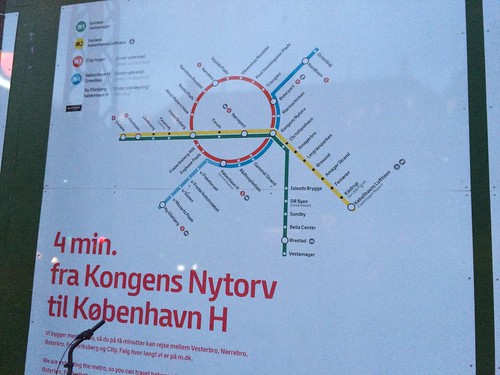“So now, less than five years later, you can go up on a steep hill in Las Vegas and look West, and with the right kind of eyes you can almost see the high-water mark — that place where the wave finally broke and rolled back.” — Hunter S. Thompson, Fear and Loathing in Las Vegas: A Savage Journey to the Heart of the American Dream, 1972
“Junkie.”
Just one word. One word from which we can start pulling, as if it was the string we’ve rescued from a mix of ideas that form a confusing ball of yarn behind it. We start to pull.
There’s some systems, or technologies, or services, that these days are being implicitly used as a framework for ideas — as if what we have now all we’ll ever have. Facebook, and the specific social interactions it rewards and punishes, is frequently a thing that is noted as a sort of immovable place where something happened. As if it was Times Square or Deep Space.
This is what I mean:
A mother writes down her thoughts on his son’s birthday, but he’ll never read them. He’d died not long before, of a heroin overdose. Her words are filled with pain, she questions her faith: “Where is the God that is making us all so sad?” she asks.
She posts these thoughts on her dead son’s Facebook page.
Someone replies: “Junkie.”
This is described in a post by Stephanie Wittels Wachs: “The End of Empathy” that you might have already read. The mom is her mother, the son her brother.
She goes on to talk about how in engaging directly with someone online, even someone who’s behaved like a complete knucklehead, the most frequent thing that happens is a softening, perhaps an apology, perhaps, even, a complete change of attitude.
But why?
My own ‘a-ha!’ moment in this regard came, thankfully, in a much lighter situation. A long, long time ago, when I lived in an island far far away — Ireland!! — I wrote a parody abridged script for The Matrix Revolutions that was quickly picked up and shared and read by thousands of people (In 2003, this was a big deal). Within that blast of short lived micro-Internet pseudo-fame, I always remember a particular interaction with one of the first people to comment on it (I had posted that on my weblog, with comments open, those were the days!). This person replied:
Its easy to make fun of something you don’t understand. You did a damn fine job of that.
Which led me to post a lengthy reply which could easily have turned into one of the many essays academics publish about these movies. I went all the way: comparison with other movies and texts, religious themes, even threw in some Plato for good measure. My honor as a nerd had been challenged, I had to reply.
The very first comment on my long reply was from that same guy (Sadly the comments were lost when I migrated away from MovableType a few years ago so you can’t see them in the page). He said, in essence, “Wow, you have really spent a ton of time thinking about this stuff, definitely more than I have, now I realize were coming at this as a loving fan and I appreciate it, thanks mate.” (Ireland, remember?)
But, again: why?
Connection is not communication
Aside from the odd psycho here and there, why is it that so many many otherwise decent, perhaps even nice people appear become trolls online? And why do they revert to being human being if you engage directly?
The digital age has shown our true colors… hmm? We are all jerks until confronted, is that it? And then cowards? Or suddenly reasonable? Or what? Is it Facebook’s fault, or Twitter? or …
Well, yes and no. Yes because these toxic interactions that would otherwisenever happen are happening over those channels, but it’s not their “fault.” It’s just that they are carriers of information. They are indifferent to the semantics of the bits they transmit. They can just as easily be distributing a video of a puppy saving a kitten from drowning as they can be broadcasting a horrifying video of a beheading of an aid worker by some idiot psychopath.
This behavior happens because we have potentially connected everyone to everyone, and it’s happening over a channel that is connecting people without context, without community, without history, without background.
Someone can now reach you but without the cushion and controls and context of a community around that connection, it can’t be a communication, it just can’t. You need to have some idea of who someone is before you can interact with them effectively. Words without a context are meaningless and therefore carry little cost. This is why people (perhaps some with poor impulse control, perhaps other problems, but not always) can run around the Internet threatening others with rape, theft, and murder, and then casually get up from their desk, close their computers, kiss their kids as they finish their cereal, and go to work without a worry in their mind.
They would never do that at their neighborhood meeting. Never! Why? Because there’s community rules. Because they would be ran out of town, or put in jail, or whatever.
But wait! Aren’t social networks communities?
Nope. At least, not necessarily.
What we need is to get into our heads that Facebook, Twitter, LinkedIn, or any other “flat” social networking service are not communities.
Repeat after me. They are not communities. They are not. They. Are. Not. Even a Facebook Page is not a community anymore than a marker attached to a wall on a random street (so that people can write on the wall) is a community.

The Original Facebook Wall: the Wailing Wall in the Old City of Jerusalem
Facebook, Twitter, LinkedIn, they are a utility. Nothing more, nothing less. We use electricity to power a TV, which can they show good things or bad things. We don’t blame the power company because they let us cook some dinner and let someone in our home that turned out to be a jerk.
No, no, no, someone says. You’re talking about my Internet provider, like AT&T, or AOL or whatever. Those jerks. Facebook isn’t a utility! It’s the global consciousness arising from the deepest, purest corners of our shared soul! Everyone can grab someone else’s hand and sing Kumbaya in unison. Come on people…!
(cue the tumbleweeds, rolling across the view).
Interaction needs context
“Flat” one-size-fits-all social spaces like Facebook or MySpace (remember MySpace?) or Friendster (remember Friendster?) or AOL (Remember AOL?!?!) have been heralded one after the other as “the global village”, a “global consciousness”, a global whatever.
This, however, is — to put it technically and delicately — total bullshit. There’s no global village. There’s global reach. The fact that my connections to people can be drawn as arcs that travel across the planet doesn’t mean that my village is the planet, it just means that the people I talk to are dispersed.
AOL, Friendster, MySpace are no longer talked about more because of technological/execution failures rather than model failures. AOL got stuck with modems, but it still generated over 5 BILLION USD in revenue a year (yep). Friendster imploded under load but was revived for a while with electric paddles and if they had managed to hang one I’m sure they’d still be alive, even if just barely. MySpace became a total garbage fire both in terms of performance and content so it couldn’t be the beacon of the world, but it’s still hanging in there.
The reason those services failed are primarily technological. They thought modems would be cool forever. They couldn’t adapt. They couldn’t handle the load. Facebook pulled it off, and it’s no minor feat. But check this out:

AOL Welcome Login Page, 20 Years Ago
Now do this: open your browser and visit facebook.com. Look at the image above. look at the site. Repeat as much as you can stand it. Ok, maybe not that much.
I’m not even going to bother to point out all the overlaps. That’s why we have a word like “obvious.” You have a Facebook account like you have an account with the power company, or like you have with the cable company. Same goes for LinkedIn, but with a different purpose. Or Twitter. Step back and think about the accounts themselves, the services. You don’t “enjoy” belonging to Facebook (early on, when it was exclusive and specific to campuses you did enjoy it, but that actually just reinforces the point that’s coming). Just like you don’t “enjoy” having an account with the electric company, but you have it because that way you can have light, cook, and watch TV and so forth. You are on Facebook because it gives you access to a bunch of other things. Whatsapp and Instagram (short private messages, photos) are also probably in a trajectory to settle as a utility. It’s not a coincidence Facebook bought them.
The point is there have been many attempts at building social utility overlays for the Internet, and through work, luck, evolution and determination we finally got them.
Yay!
This isn’t a putdown. At all. We need this stuff. We just have to remember that we need it to do something else.
It’s not the electric company’s fault that the movie was terrible
Facebook, Twitter, LinkedIn… are not “the end”. They’re not the last stage of human communication. They’re not even the beginning. They’re the necessary infrastructure we had to build before we could do all the cool stuff.
That word, “Junkie,” that’s the equivalent of a prank call within Facebook. Not that it’s a prank, but rather that it’s the lack of context that permits its execution and existence.
We need to move past this. We can’t think of Facebook as being responsible for destroying human empathy just as we didn’t think of the phone company as doing that because someone could prank-call you.
The text, the happy icons and the profile photos and everyone having a good time at lunch obscure the fact these are minimum-common-denominator interactions, not insignificant by any means, but not unlike what you’d get if you could be publishing your own little newsletter and sending it to whomever you pleased.
With this infrastructure in place is when we must focus on communities that are meaningful in whichever reality you’re engaging.
How? There’s many ways. Individual reddits (rather than reddit itself) are an example of proto-digital communities. They lack formal tools that communities need to shape rules and behavior, but the best ones create their own ad-hoc versions.
Medium is itself an example of something new that you can build on top of the utilities. Not quite a community, but not quite just a publishing platform either.
Communities can also be built effectively online, leveraging the connections created by the utility networks into well defined social spaces. How? For that, go read “Building Better Social Networks: Beyond Likes, Follows and Hashtags” from Gina Bianchini (co-founder of Ning, and therefore my old boss, so there’s disclosure for you!) who now runs Mightybell. From her article:
We can do better than platforms that require a convoluted combination of hashtags and poorly organized numbers for questions and answers to “have a conversation.” No one should have to work this hard to chat.
Exactly. What that means is that you don’t have to have a conversation in an environment fearing that some random person might appear and start making a mess. Conversely, it also means you’re not always walking on eggshells, you’re not diluting what you say because there’s a context to it that’s provided by the community.
When you have true communities (either in the digital or the real world) the kinds of regular trolling and abuses we were talking about early on simply don’t happen, precisely because it’s a community, not just a communication channel that is indifferent to what it is being used for.
Social networks were one of the waves of the early 21st century. Large-scale digital social interconnections, with maximum coverage and total accessibility (governments permitting…).
For social and digital what comes next is not another wave, but what happens when a wave breaks reaching the shore:
A billion waterdrops.
(reposted from medium)











 Google today revealed the final name of Android N, and it is not what you were expecting it to be. The official name of Android N will be Android Nougat. Not Nutella that many were expecting it to be called.
Google today revealed the final name of Android N, and it is not what you were expecting it to be. The official name of Android N will be Android Nougat. Not Nutella that many were expecting it to be called.





















